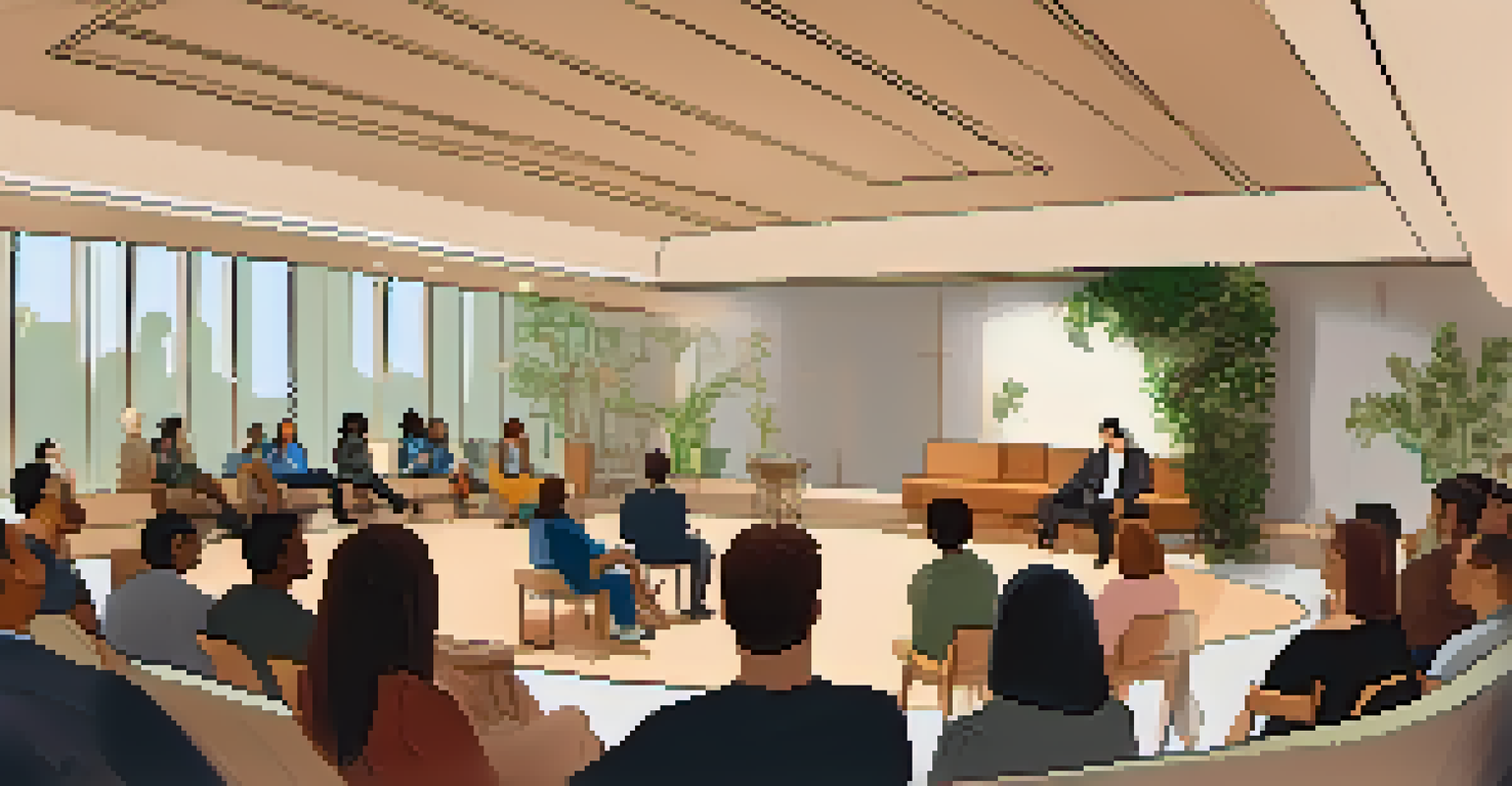Engaging with the Audience: Tips for Interactive Performances

Understand Your Audience's Interests and Needs
Before diving into your performance, take a moment to research your audience. Understanding their interests, backgrounds, and preferences will help tailor your content to resonate with them. For instance, if you're performing for a group of teens, incorporating pop culture references might spark their engagement.
The art of communication is the language of leadership.
Engagement is a two-way street; the more you know about your audience, the easier it is to connect. Use surveys or social media polls to gather insights about what they enjoy. This not only makes your performance more relevant but also shows that you value their input.
Remember, an engaged audience is often a vocal one. When you tap into their interests, you’re likely to see more active participation, making your performance more dynamic and enjoyable for everyone involved.
Incorporate Interactive Elements into Your Performance
One of the best ways to engage your audience is by incorporating interactive elements into your performance. This could be anything from live polls, Q&A sessions, or even games that involve audience participation. For example, if you're a musician, inviting audience members to suggest song topics can create an electric atmosphere.

Think about how you can break the fourth wall and invite your audience into the experience. This could mean asking for their opinions during a presentation or encouraging them to join you on stage for a segment. The goal is to make them feel like active participants rather than passive observers.
Know Your Audience Well
Understanding your audience's interests and preferences enhances engagement and connection during your performance.
By making your performance interactive, you not only hold your audience's attention but also foster a sense of community. When participants feel involved, they're more likely to remember the experience and share it with others.
Use Storytelling to Create Connections
Storytelling is a powerful tool for engaging an audience. It allows you to convey complex ideas in a relatable manner, making your performance more memorable. For instance, sharing a personal anecdote related to your theme can create a deeper connection with your audience.
People will forget what you said, people will forget what you did, but people will never forget how you made them feel.
When crafting your story, consider the emotions you want to evoke. Whether it's humor, nostalgia, or inspiration, tapping into these feelings can enhance audience engagement. A well-timed joke or a heartfelt moment can keep them on the edge of their seats.
Moreover, stories can serve as a bridge between you and your audience. By sharing experiences that resonate with them, you invite them to invest emotionally in your performance, leading to a more interactive and fulfilling experience.
Encourage Audience Participation Throughout
Encouraging audience participation isn't just a one-time event; it's something you can weave throughout your performance. Simple prompts like asking for a show of hands or inviting thoughts during key moments can keep the energy alive. For example, during a workshop, you might ask participants to share their own experiences related to the topic.
Incorporating activities that require involvement can also enhance the interactive nature of your performance. Think along the lines of breakout discussions or collaborative tasks. These moments can energize the room and make attendees feel their contributions are valued.
Engage with Interactive Elements
Incorporating interactive components, like polls or audience participation, fosters a sense of community and keeps attention alive.
When you foster a culture of participation, it creates a dynamic atmosphere. This not only boosts engagement but also allows for diverse perspectives, enriching the overall experience for everyone involved.
Utilize Technology to Enhance Interaction
In today's digital age, technology can be a powerful ally in fostering audience engagement. Tools like live polling apps or audience response systems can make it easy for attendees to share their thoughts in real-time. Imagine conducting a quick poll during your performance to gauge opinions or preferences; it instantly makes participants feel involved.
Social media can also play a significant role in enhancing interaction. Encouraging your audience to use specific hashtags to share their thoughts or experiences during the performance adds a layer of connectivity. This not only engages the live audience but also expands the reach of your performance to those online.
By leveraging technology, you not only modernize your approach but also create multiple avenues for interaction. This can lead to richer discussions and a more vibrant community around your performance.
Create a Welcoming and Inclusive Environment
An inviting atmosphere is essential for audience engagement. When your audience feels comfortable and included, they are more likely to participate and share their thoughts. Make sure your performance space is accessible and that you acknowledge diverse perspectives.
Inclusivity can be as simple as using language that resonates with everyone in the room. Avoid overly technical jargon unless necessary, and explain terms when you do use them. This ensures that everyone, regardless of their background, can follow along and feel part of the conversation.
Follow Up for Lasting Impact
Continuing the conversation after your performance through follow-up communication enhances audience relationships and encourages future participation.
Additionally, consider how you can foster inclusivity during your performance. Inviting diverse voices and experiences into your narrative can make your audience feel valued, encouraging them to engage more actively.
Follow Up Post-Performance for Continued Engagement
Engagement shouldn’t end when your performance does; following up with your audience can keep the conversation alive. Consider sending out a thank-you email or a survey to gather feedback and insights. This not only shows appreciation but also gives you a chance to learn what resonated with your audience.
You might also want to share resources or additional content related to your performance. Whether it's a recording, a blog post, or recommended readings, providing further value can keep your audience connected to the experience.

By maintaining these connections, you are not only building a community but also setting the stage for future interactions. This ongoing relationship can enhance your credibility and encourage audiences to return to your future performances.